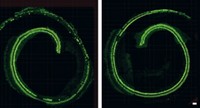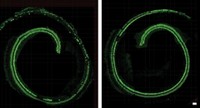Advertisement
Grab your lab coat. Let's get started
Welcome!
Welcome!
Create an account below to get 6 C&EN articles per month, receive newsletters and more - all free.
It seems this is your first time logging in online. Please enter the following information to continue.
As an ACS member you automatically get access to this site. All we need is few more details to create your reading experience.
Not you? Sign in with a different account.
Not you? Sign in with a different account.
ERROR 1
ERROR 1
ERROR 2
ERROR 2
ERROR 2
ERROR 2
ERROR 2
Password and Confirm password must match.
If you have an ACS member number, please enter it here so we can link this account to your membership. (optional)
ERROR 2
ACS values your privacy. By submitting your information, you are gaining access to C&EN and subscribing to our weekly newsletter. We use the information you provide to make your reading experience better, and we will never sell your data to third party members.
Neuroscience
Scientists confirm key protein that helps convert sound vibration to electrical signals
The finding could help with hearing loss treatments
by Cici Zhang
August 28, 2018

We wouldn’t be able to see, smell, or hear without sensory cells, which convert what’s happening in the world into electrical signals sent to our brains. One of the most delicate kinds of sensory cells lies in our ears. Scientists have known for decades that when activated by sound vibration or head movement, ion channels on the membrane of our inner-ear sensory cells—known as hair cells—will open up a pore, triggering a cascade of signaling events that allow us to hear and keep our balance. But the molecular basis of that pore has remained unclear.
Now, a team led by David Corey of Harvard Medical School and Jeffrey Holt of Boston Children’s Hospital report evidence that a protein called TMC1 forms the pore, allowing ions to flow into the inner-ear hair cells, a critical step in converting sound to electrical signal (Neuron 2018, DOI: 10.1016/j.neuron.2018.07.033).

Karen Avraham of Tel Aviv University, who wasn’t involved with the work but in 2002 found that a TMC1 mutation causes deafness in aptly named Beethoven lab mice, says that research done over the years has suggested TMC1 has an important role in hearing. This latest paper, however, “clinched it.”
By mutating amino acid residues of the TMC1 protein in mice, the researchers could examine whether the change would alter sound-induced electric currents in hair cells isolated from the animals. They substituted each residue with cysteine, then modified each cysteine with a bulky charged group. Almost all residue modifications inhibited the electric currents within seconds, suggesting ion flows were affected by mutations in TMC1 and that TMC1 forms the pore of the ion channel in hair cells.
Avraham says the work has implications for future hearing loss therapies. Understanding the basic mechanisms of how sound vibration is converted into electrical signals could help develop a therapy for not only TMC1-variant-caused deafness, which affects a relatively small number of people, but also all forms of hearing loss, Avraham says. An estimated 400 million people of all ages worldwide experience hearing loss.
Corey says that drug therapies targeting naturally occurring TMC1 mutations in humans could be possible, but initial treatments are more likely to employ gene therapies that replace the mutant protein or directly correct the gene. Because TMC1 only works along with other proteins within hair cells, he explains, screening 10,000 drug candidates might require 10,000 mouse ears, which is not practical. Co-lead author Jeffrey Holt has patents on TMC1 gene therapy and advises biotech companies developing inner-ear therapies.




Join the conversation
Contact the reporter
Submit a Letter to the Editor for publication
Engage with us on Twitter